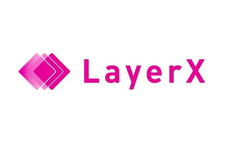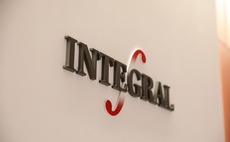
Korean carve-outs: Network effects
Chaebol carve-outs have historically been elusive for global firms operating in Korea. A growing appreciation of their value-add capabilities could be the catalyst needed to direct more deals their way
Like many of its industry peers, VIG Partners is facing a dilemma. The firm launched its fourth fund at the beginning of the year and naturally wanted to build on the momentum from its previous vehicle, which closed at $600 million in 2017. But ultimately the GP decided on a relatively modest increase – by Asian standards – and announced a target of $800 million. A first close of $530 million came in May and the hard cap was set at $850 million.
At issue was not so much the willingness of VIG's investors to back a larger vehicle, but the prospect of a sizeable increase putting the firm into an altogether different league than it was accustomed to. In that category, most investment activity was likely to involve prying assets from the country's conglomerates, where most of VIG's preferred sourcing approaches would be less effective.
"Even if we could raise a $2 billion fund in Korea, we wouldn't, because that would mean we'd need to look at deals with a check size of at least $300 million, which means mostly carve-outs from chaebols via auctions," says Jason Shin, a managing partner at VIG. "Those situations come down to paying the highest price, which isn't an area where we want to compete. That's why we are purposely keeping our fund size small – because we want to do control deals outside of the chaebol space."
VIG is not alone in its decision to forego chaebol carve-out opportunities; many of its peers in Korea's middle market regard these deals as outside their comfort zones. It leaves a vacuum that global firms – which can both meet the conglomerates' asking prices and pursue international development initiatives post-acquisition – are more than willing to fill.
Addressing this segment is not easy for global GPs. They tend to lack well-developed on-the-ground networks for sourcing proprietary deals and as a result participate in the same auction processes that their local counterparts find so expensive. Determined foreign investors will likely find ways to mitigate these challenges; those that can find areas of differentiation beyond price will have a key advantage.
Scarce sellers
When considered as a portion of large-cap deal flow in South Korea, chaebol carve-outs may seem underwhelming. Among the 35 South Korea buyout deals worth over $250 million over the last 10 years recorded by AVCJ Research, acquisitions from domestic conglomerates accounted for just 13; the remainder comprised carve-outs of multinationals' Korean subsidiaries, at six deals, and purchases of independent businesses or secondary buyouts, at 16.
One reason for this relative scarcity is the fact that chaebols tend to be highly sensitive to the impact of a sale on their image, particularly in the domestic market where a deal may be highly scrutinized for its effect on the division's employees. As such, while price has historically been important to sellers, the buyer's credentials as an operator of businesses are just as important.
"They want to make sure that they are handing the baton to a buyer that can operate the company well, because they don't want to look back a year later and see the company that they sold is going through trouble," says Joseph Lee, a partner and CIO at IMM Private Equity. "That can lead to some blowback to the original conglomerate, in terms of reputational risk."

The representation of chaebol sellers in the buyout tables could rise as pressure mounts on conglomerates. Not only do they face new regulations on cross-shareholding structures within their businesses, but also a higher minimum wage, which is set to take effect this year and eat into the profits of service-oriented companies. GPs hoping to source deals from chaebols will have to cope with the broader universe of corporate players that have always been the first call for conglomerates, but observers do see a developing appetite for private equity counterparties.
"When chaebols are planning divestments, they usually consider global strategic buyers first, because they believe those buyers can pay higher valuations and are also better equipped to handle the assets after the sale," says Howard Lee, a managing director in the Seoul office of BDA Partners. "At the same time, global GPs are becoming more important in the buyer universe, and if there are any sectors those firms specialize in, they can be very compelling buyers."
Despite this optimism, international private equity participation in Korean corporate divestments remains largely a matter of potential. Of the major carve-outs recorded by AVCJ since 2010, only a handful have been sold to non-Korean GPs. While there are landmark deals such as KKR's acquisition of two assets from LS Group in 2017 – one of which, copper components supplier KCF Technologies, has since been exited – the majority of such opportunities continue to gravitate elsewhere. Domestic investors such as IMM or Hahn & Co, or pan-regional players with a longstanding Korea presence or track record like MBK Partners and Affinity Equity Partners are reasonably prolific.
Little black books
One reason for the apparent difficulties faced by global GPs is their relatively sparse local business connections. While strong networks are necessary in any market, in Korea this becomes even more important due to the lack of support systems that GPs might be used to in other parts of the world. "Sourcing is hard for firms in Korea, more so than in Japan, because the level of intermediation isn't here," says Scott Hahn, CEO of Hahn & Co. "Most of the global firms buy from international sellers or other private equity firms, or they buy from individual sellers rather than from corporate groups."
By contrast, domestic private equity firms have teams composed almost entirely of Korean investment professionals dedicated to securing Korean deals. As one investor observes, anyone who has worked in the country for 20-30 years is bound to have connections to all the major chaebols. Through paying a reasonable amount of attention, they can pick up on rumors of upcoming sales and potentially arrange transactions privately at attractive valuations.
Some also try to leverage the identities of their institutional backers, notably the National Pension Service (NPS), in order to build credibility with chaebols. "The fact that we've been vetted by the most sophisticated investors here in Korea gives us a bit of a halo effect," says IMM's Lee. "If we can get support from prominent Korean institutions, that gives a lot of conglomerates comfort that they can view us as an equal counterparty."
Foreign investors are not able to namecheck Korean LPs, but they can try to replicate their local counterparts' on-the-ground presence. However, these efforts can be hindered by the fact that they are part of a larger organization for which Korea represents only one part of the strategy. Moreover, even if they do recruit local professionals, their local teams tend to be much smaller than those of domestic players, and inevitably their level of coverage suffers.
In light of this weakness, some foreign GPs have found that segmenting their coverage by sector may not be helpful in Korea. Rather, they divide up the market by chaebol group, recognizing that each conglomerate has interests spanning multiple industries. It is hoped this approach offers deeper insights into likely developments.
"We play to our industry specializations in other markets, but in Korea our dialogue is across multiple industries, and we organize ourselves the way the market is organized," says a Korea-based managing director at one global GP. "Japan and Korea are very different from other markets in that respect."
These efforts can only go so far, however, due to the same lack of resources that prevents global GPs from building relationships with the conglomerates in the first place. Even more generously staffed local players cannot afford to assign professionals to cover specific conglomerates, particularly since deal flow from this direction cannot be relied on. As one local investor says, "What happens if you're covering a certain chaebol and they don't decide to sell in the next five years? Do you sit there, doing nothing?"
Play to your strengths
For this reason, market observers say that rather than try to copy Korean GPs' sourcing networks, global investors are better off focusing on the areas where they have the greatest advantage. This typically means bringing their larger fund sizes to bear in auctions where they can withstand the upward pressure on prices better than their local peers.
"Local GPs may have better networks, but if the deal goes to the auction process it's quite challenging for them to win without lowering their expectations on IRR," says Wonpyo Choi, a partner at Bain & Company. "If they have the right connections with the owners and the conglomerates want to have a quiet and fast process, they may be able to make some deals happen. But that's not usually the case."
In addition to their deep pockets, foreign GPs cam draw on their global coverage, which can be a powerful tool for operational improvements. Chaebols that are concerned about ensuring their former subsidiaries will continue to perform well after the handover may be attracted to buyers with existing portfolio companies overseas in the same or complementary industries that can drive business growth. This was a major factor in KKR's purchase of the LS businesses, with the global firm claiming to have helped KCF make inroads into key overseas markets upon selling this year to SK Group.
These hopeful views must be balanced by the fact that global private equity firms have only really gained traction on carve-outs of Korean assets where the seller is a multinational, such as Baring Private Equity Asia's purchase of Lafarge Halla Cement and The Carlyle Group's acquisition of ADT Caps from Tyco International. These deals typically come to market through more traditional intermediaries; therefore, they may not reflect a global firm's sourcing capabilities when it comes to Korean conglomerates.
That said, there's nothing to stop local GPs from competing for multinational divestments – IMM, for example, recently acquired the Korea unit of global industrial gases player Linde, and MBK bought supermarket retailer Homeplus from Tesco in 2015.
It might also be argued that domestic GPs tend to outperform their global peers when it comes to exploiting the nuances of the Korean market – tapping into a broader network of small conglomerates that may escape the notice of foreign firms, or providing more flexible deal terms such as shared control. And there is no denying that they are able to target deals across a wider range of sectors, given foreign managers are barred from holding control stakes in areas such as financial services.
While local firms will continue to have an edge in multiple situations, most investors believe global GPs will become an increasingly powerful force in Korea as they grow more adept at identifying opportunities where they can make the most effective pitch. Assuming these pitches register, there should be more examples of foreign managers adding value where others cannot – and offering secure futures for the former subsidiaries of conglomerates as well as cash windfalls for the conglomerates themselves. This would in turn generate more inbound deal flow.
It is difficult to say when this evolution might achieve critical mass, but it would see some of the barriers between domestic and foreign investors fade. "Generally, I don't think the chaebols will classify potential buyers as local, global, or regional," says Richard Lee, a senior partner at McKinsey & Company. "Most of the time they will look at other factors such as trust and price, and in some cases obviously a global network can help, but generally they won't see it in that dichotomy."
Latest News
Asian GPs slow implementation of ESG policies - survey
Asia-based private equity firms are assigning more dedicated resources to environment, social, and governance (ESG) programmes, but policy changes have slowed in the past 12 months, in part due to concerns raised internally and by LPs, according to a...
Singapore fintech start-up LXA gets $10m seed round
New Enterprise Associates (NEA) has led a USD 10m seed round for Singapore’s LXA, a financial technology start-up launched by a former Asia senior executive at The Blackstone Group.
India's InCred announces $60m round, claims unicorn status
Indian non-bank lender InCred Financial Services said it has received INR 5bn (USD 60m) at a valuation of at least USD 1bn from unnamed investors including “a global private equity fund.”
Insight leads $50m round for Australia's Roller
Insight Partners has led a USD 50m round for Australia’s Roller, a venue management software provider specializing in family fun parks.








